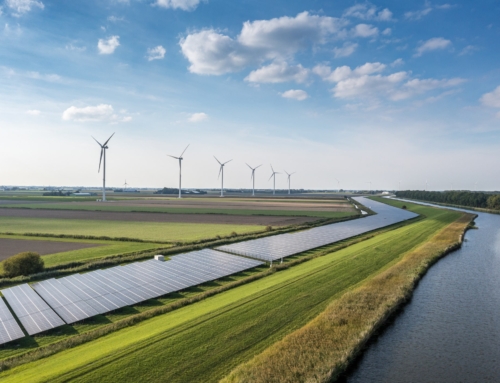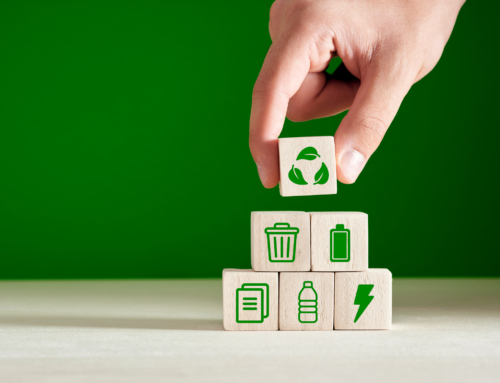What Are the Pros and Cons of Hydroelectric Energy?
We drink it, swim in it, and need it to sustain life, but did you know that water accounts for 16.6% of the world’s total electricity production? There are thousands and thousands of dams in the world, but only a few of them produce hydroelectric energy to power our homes and businesses. While it’s certainly an abundant source of available energy, there are both pros and cons of hydroelectric energy. Here are a few hydroelectric energy advantages and disadvantages.
Pros of Hydroelectric Energy
There are many advantages of hydroelectric energy including renewability, zero emissions, and even recreational opportunities. Yes, hydropower can even be fun. Learn more about the advantages of hydroelectric energy below.
1. It’s Good for the Environment
Although hydroelectric energy does have some disadvantages, it is one of the most environmentally friendly forms of energy production available to us today. It does not use any fossil fuels, produces no harmful emissions, and provides a steady supply of clean energy—what’s not to love? While dams can have a heavy impact on the environment, the only pollution these dams create is from the initial construction. The actual production of energy produces no carbon emissions.
2. It’s A Renewable Resource
“Water, water everywhere but not a drop to drink.” While you won’t be drinking directly from a river (or ocean) anytime soon, one of the main advantages of hydro energy is that water is nearly everywhere and can be used to produce hydroelectric energy. Because of the water cycle, it is a renewable resource that doesn’t run out—allowing us to conserve limited and non-renewable resources for other uses.
Hydroelectric energy is also a great resource because it creates greater energy independence for countries. A reduced demand for external fuel sources may help lessen conflict and improve economic issues for countries that struggle to get fuel from international sources. Instead, they can provide clean, domestic power with hydro energy.
3. It’s Reliable and Highly Efficient
One incredible advantage of hydroelectric energy is that is it one of the most efficient energy resources in the world. Consider that solar power is only a maximum of 30% to 36% efficient, wind power only 25%-45% efficient, and even coal power is only 33%-40% efficient. All of these methods pale in comparison to hydro energy which is up to 90% efficient at converting water into electricity.
Hydroelectric energy also has the advantage of little to no downtime because the flow of water is only stopped for general repairs, maintenance, and upgrades. Solar power, on the other hand, decreases in production every night when the sun goes down, and wind power is only good as long as there is a steady breeze.
4. It’s Flexible
Unlike other forms of power like solar, wind, or coal, hydroelectric energy is constant. The flow of water to produce energy can easily be altered to meet supply demands. This means that electricity can be made available when it’s needed, which reduces energy waste.
5. It’s Safe
Compared to many other forms of energy production, dams that produce hydro energy have been fairly safe over the years. Most issues or problems that have occurred are the result of poor construction and low safety standards in older dams. Another advantage of hydroelectric energy in this situation is that there is no combustible fuel involved, lowering the risks associated with fossil fuels or nuclear energy.
6. It’s Economical
Although the initial expense can be hefty, once a hydroelectric dam is up and running, the cost of maintenance and employee wages is relatively low. Plus, water doesn’t fluctuate in cost the way that traditional fossil fuels and imported fuels do. Countries that use hydroelectric power can save a lot of money, and some countries, like Paraguay, are able to get nearly all of their energy from hydroelectric dams.
7. It’s Great for Recreational Use
Finally, dams typically create reservoirs. If you live near a reservoir or have ever visited one, you know that it’s essentially a man-made lake where people enjoy fishing, boating, swimming, windsurfing, and more. There are even some famous reservoirs you may have heard of like Lake Mead, created by the Hoover Dam.
There are many great advantages of hydroelectric energy including energy independence and a sustainable source of energy for the future.
Cons of Hydroelectric Energy
The flip side to all these advantages of hydroelectric energy are the disadvantages of hydroelectric energy. Weighing the pros and cons of hydroelectric energy is important because we should also know the impact our actions have when creating sustainable energy solutions. Here are a few of the main disadvantages of hydroelectric energy.
1. It Has an Environmental Impact
Perhaps the largest disadvantage of hydroelectric energy is the impact it can have on the environment. Dams can damage or otherwise impact the environment both upstream and downstream through their construction process during the formation of the dam. To build a dam, new roads and power lines must be installed that disrupt the environment. Dams also often form reservoirs that flood large areas and displace natural habitats. When dams flood areas, it creates sections of still or stagnant water that kills vegetation which emits greenhouse gasses as it rots. This is especially true in humid and tropical environments.
Blocking the flow of water can also seriously impact fish migration, especially for species like salmon that rely on rivers to spawn. Dams can even impact biological triggers that tell fish where to go when it’s time to migrate. Some dams have sought to solve this disadvantage of hydroelectric energy by creating fish ladders or fish elevators to help migratory fish make it to their spawning grounds.
The final environmental disadvantage of hydroelectric energy on our list is water quality. When dams are created they limit the flow of water, which affects the oxygen levels in the water. Lower oxygen levels behind the dam can result in lower oxygen levels downstream as well. When there is not as much oxygen in the water, it is more difficult for some species of fish to survive which affects river habitats.
2. It Displaces People
Reservoirs not only displace animals from their habitats, but they also displace people. This disadvantage of hydroelectric energy can have quite a large impact on communities. People who have lived in an area their whole lives may be forced to move, and although they are typically compensated for moving, it can’t make up for what they have lost.
Cities, towns, and villages have been eliminated by dams, and local cultures displaced. If people refuse to move due to construction, they have sometimes been forced out of their homes with the threat of violence. In 1982, one instance in Guatemala resulted in the deaths of 369 Mayans who refused to move from their homes for the construction of the Chixoy Dam. Over the years, dams have displaced millions of people, forcing them to relocate their lives and families elsewhere.
3. It’s Expensive
Another disadvantage of hydroelectric energy is the expense required to build a dam in the first place. Although they don’t cost much to operate, the time it takes for a dam to pay for itself can vary widely. Some dams take 2-5 years to construct, while others like the Itaipu Dam in Brazil and Paraguay can take significantly longer leading to increased costs. Everything totaled, the Itaipu Dam took 18 years and $18 billion dollars to build.
Since the 1950’s, an estimated $2,000 billion dollars has been spent on dam construction around the world, with average construction delays of 44% and overestimates on cost reaching an average of 96%. Overspending and delays make it more difficult to get a return on the money invested in the construction of the dam.
4. There are Limited Reservoirs
Although water is an unlimited resource, the conditions necessary to build a dam are limited. This is a disadvantage of hydroelectric energy because it means you cannot simply build a dam anywhere you please. In fact, most locations that are suitable for building hydroelectric dams have already been used for this purpose. Another factor to consider is that even if a location could support a hydroelectric dam, it may not generate enough profit to make the project worthwhile.
5. There are Droughts
When weighing hydroelectric energy advantages and disadvantages, it’s important to take into consideration the fact that water can and does go through cycles of abundance and drought. Lower than normal water levels can heavily impact energy production and is a disadvantage of hydroelectric energy.
Aside from being affected by drought, hydro energy production can cause drought conditions downstream if they don’t allow sufficient water to pass through. This can be especially detrimental if a dam is located along a river or reservoir that allows water passage into another country. The country upstream could potentially cause a drought for their neighboring country either intentionally or inadvertently.
6. It’s Not Always Safe
Despite a lack of combustible fuel, dams still offer dangers of their own. Construction accidents, as well as dam failure, can result in injury or loss of life. The Hoover Dam claimed as many as 112 deaths during its construction, and one of the worst catastrophes occurred when the Banqiao Reservoir Dam in China was destroyed by a Typhoon in 1975. The subsequent failure of the Banqiao Dam led to the deaths of an estimated 171,000 people. Thankfully, dams that are built today are constructed to higher safety standards than those in the past.
A Better Energy Solution
While there are certainly pros and cons of hydroelectric energy, there’s no denying that it’s an efficient means of producing energy for a sustainable future. Learn how you can be a part of an environmentally-conscious energy solution by signing up fo Kiwi Energy today.






